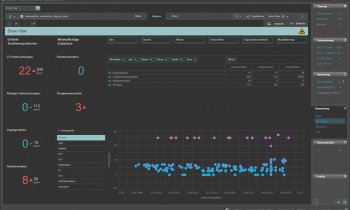Intensity-modulated radiotherapy
IMRT is an evolving method of treatment for complex forms of cancer. Although patients benefit from treatment, a precise evaluation of that benefit and overall cost-effectiveness of the method is still an uncertain science. Mark Nicholls reports

By using computer technology, intensity-modulated radiotherapy (IMRT) provides a precise and targeted dose of radiation to treat the exact size and shape of a tumour whilst sparing adjacent healthy tissue as much as possible. It is proving an innovative tool for treating cancers that have traditionally been difficult to target because of their nature and proximity to crucial structures within the body, such as cancers of the prostate, throat, and those close to the spine.
Because the radiation dose is as targeted as possible, explained consultant oncologist Dr Tom Roques, of the Norfolk and Norwich University Hospital (NNUH), England, it reduces the risk of side effects.
As part of the evolution of its IMRT treatment, NNUH is preparing to use RapidArc, which allows the IMRT beam to deliver an arc of treatment, thus speeding up radiotherapy delivery and enabling even better treatment plans. Leading university hospitals in Germany and Switzerland (the university hospitals at Gottingen and Zurich) also recently began to use RapidArc IMRT for head and neck cancers.
NNUH also uses portal dosimetry to verify the radiation dose — at one stage one of only two centres in the world to use this.
NNUH remains one of the few UK hospitals to offer IMRT routinely, though Dr Roques explained that, while it appears to have benefits to patients, precisely quantifying that benefit and the overall cost-effectiveness of IMRT is still an uncertain science. However, he added that IMRT offers a high quality dose map and is an effective way of treating unusual or concave tumour shapes. ‘With IMRT you can move little bits of lead across the radiation beam while it is turned on, so in effect you turn it into thousands of tiny beams and change the dose of each one. Through the computer software, we can treat a more complex shape. The idea is that you avoid healthy tissue and therefore reduce side effects.’ Equally, he added, if you want to keep the level of side effects the same, he said, you can increase the dose offering the prospect of better survival rates.
The key difference with IMRT is that the radiotherapy treatment map is better than a standard treatment map. ‘But that does not necessarily mean the patient will be better off or will be more likely to be cured. That is a gap that people have assumed, but is as yet unproven and may be difficult to prove.’ Dr Roques pointed out that a lot relies on computer software, which is evolving, though IMRT can be relatively labour intensive. ‘The time taken to produce a dose map is quicker than it used to but, but the time was a major barrier to many centres taking IMRT.’
The precision of IMRT has benefits when treating head and neck cancers because IMRT allows better avoidance of the salivary glands and reduces the risk of a dry-mouth for the patient. ‘In prostate there is less risk of damage to the rectum, which is a long-term complication of conventional radiotherapy, so in that respect it can actually be better for the patient.’
Dr Roques said the physics of radiotherapy remains far ahead of the biology of cancer with the challenge for the oncologist still in ensuring exactly where you need the dose - avoiding healthy tissue but not missing smaller areas of cancerous tissue in the process. ‘The weakest link in the whole chain is the doctor drawing on where the tumour is. We work quite closely with our radiologists who are expert at looking at images to help us define the volume to be treated.’
Dr Roques and his team are undertaking various elements of research to improve and further define the benefits of IMRT: looking at how radiologists can help the oncologist define the treatment volumes; the use of PET scanning after radiotherapy to ensure the tumour has all gone; and about to most accurately draw round the salivary glands they are trying to spare.
From the summer, NNUH is also introducing IGRT (image-guided radiotherapy), which offers a CT scan on the radiotherapy machine to enable more accurate patient positioning and targeting of the radiotherapy dose.
01.05.2009











